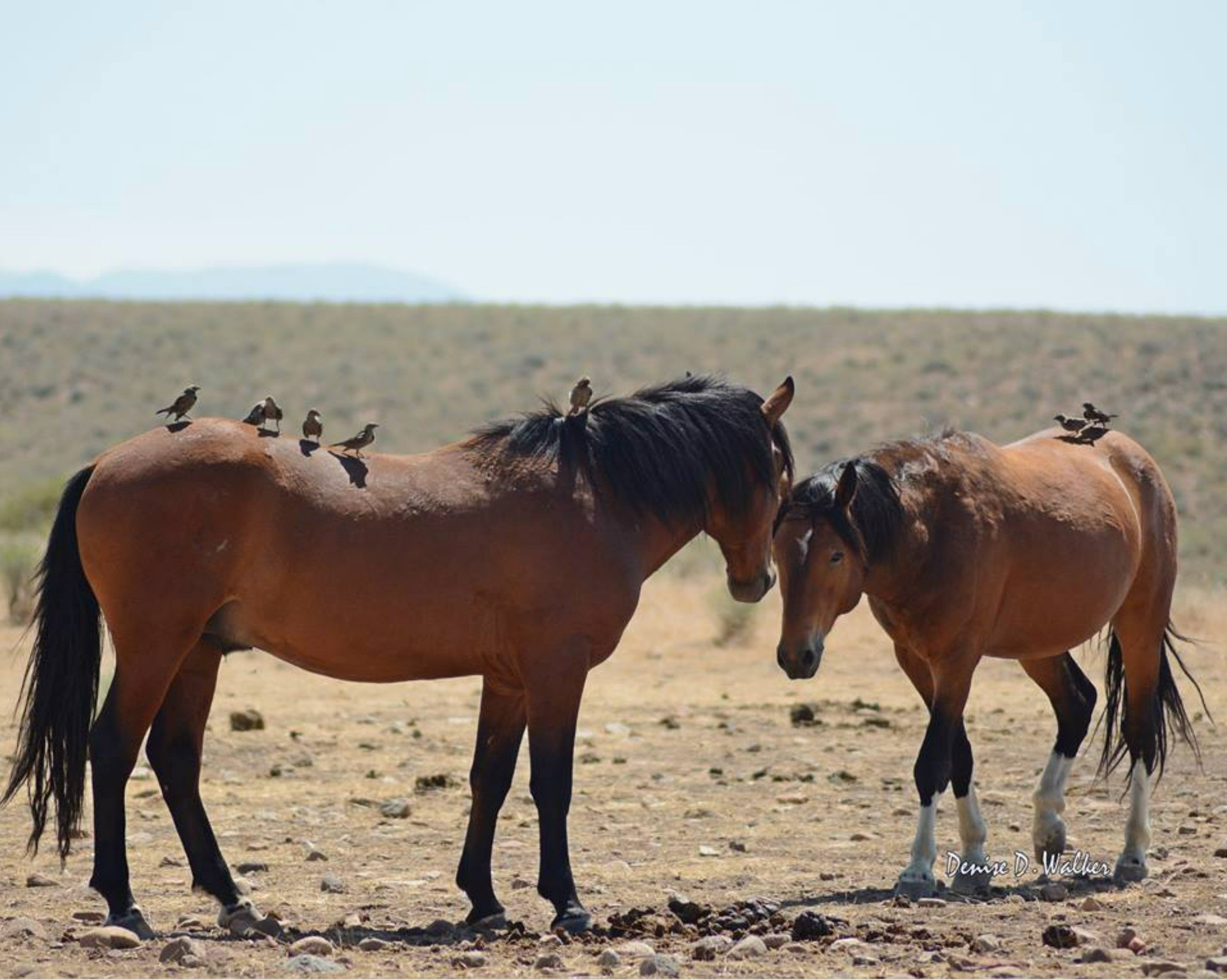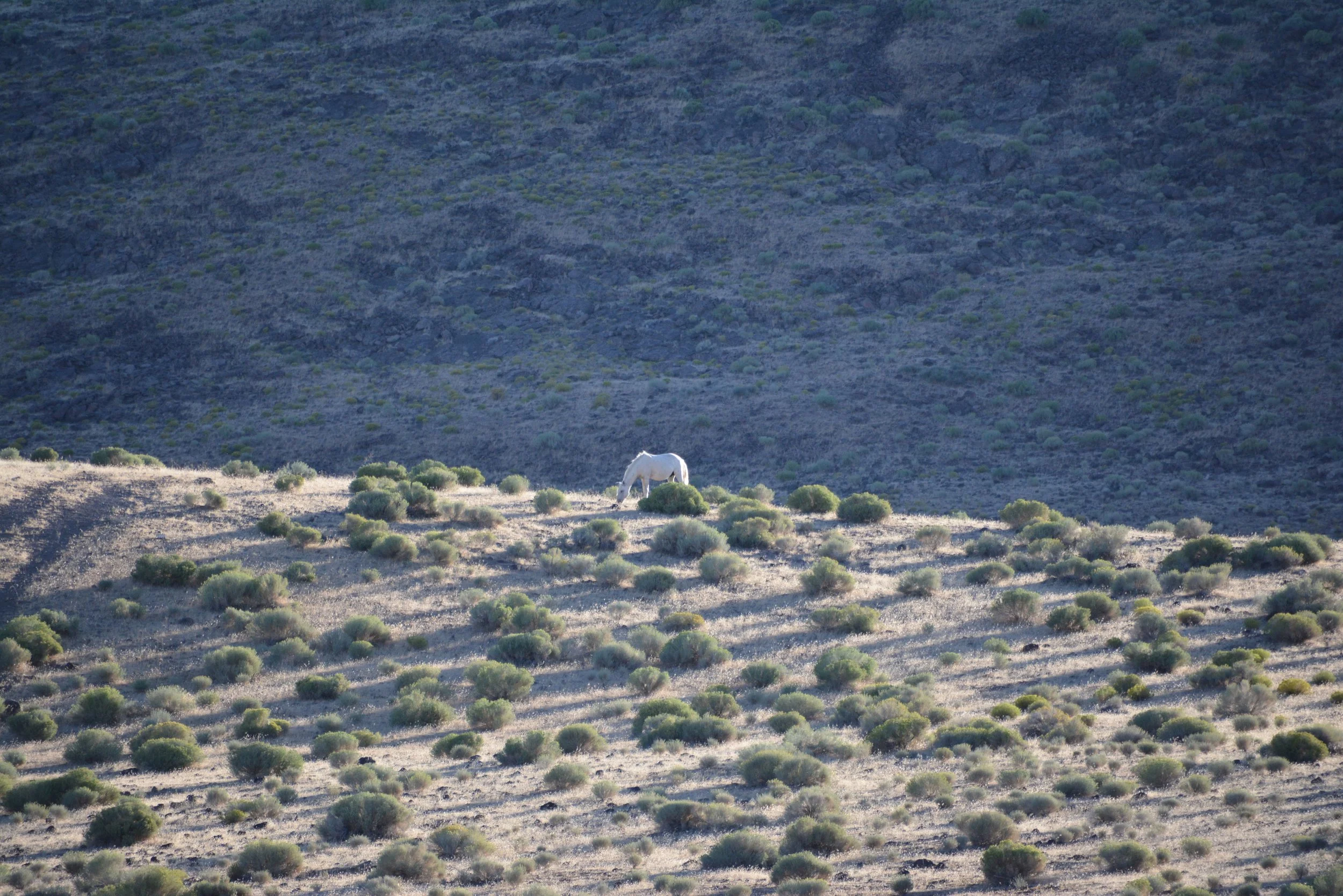On The Range
Sharing The Range
The Brown-headed Cowbird
The brown-headed cowbird can often be seen hitching a ride on the Virginia Range horses. These small blackbirds have short tails, thicker heads and a short triangular beak. They forage along the ground for seeds and small insects and love to relax on the backs of the wild horses.
These birds are actually referred to as a “brood parasite.” This is because they do not build their own nests or hatch their own babies. The female will search for another bird species that is actively laying eggs in a nest. When that bird is away, the cowbird will lay her eggs in the nest, often knocking out or damaging a few of the original eggs so the resident mother doesn’t notice. The cowbird will then leave her eggs to be hatched by the resident mother. Cowbird eggs hatch faster than most other birds and the nestlings grow much more quickly. Unfortunately, this can cause a decrease in nesting success for the resident nestlings, as the bigger baby cowbirds are able to demand more food from the mother. Fascinating fact: cowbirds have been known to use the nests of over 220 different bird species, but each individual female will specialize in a specific host species. She will lay up to 36 eggs each summer and distribute her eggs among multiple nests of her species of choice.
While the horses are not bothered by their hitchhiking antics, I’m sure several other range residents would love to see the cowbird ride off into the sunset!
Photo by Denise D. Walker
Let us show you the Wild Places
The Virginia Range is a unique place. Unlike BLM managed HMAs where the land is owned by the federal government, most of the Virginia Range is privately owned. Everything from homes, mines, industrial development, to wild and sprawling vastness. From rivers to hidden springs to dry desert. Valley floors to high mountain tops. Fields of jagged rock to pinion and juniper covered hillsides. Ankle high brush to six foot tall sage brush. The variety of landscape goes on and on.
Visitors usually drive along the perimeter of the range. Plenty of the Virginia Range horses can be viewed on these drives. So much so that local organizations often hear that the horses are acclimated to people, vehicles, etc. And some are. (They are still wild and unpredictable animals - do not feed or approach!)
But beyond that perimeter is something special. From the landscape to the truly wild horses who snort, stomp and disappear at the sight of humans. Here are some photos of those places.










